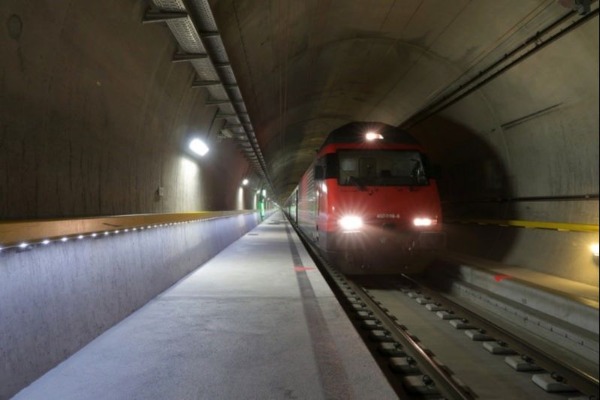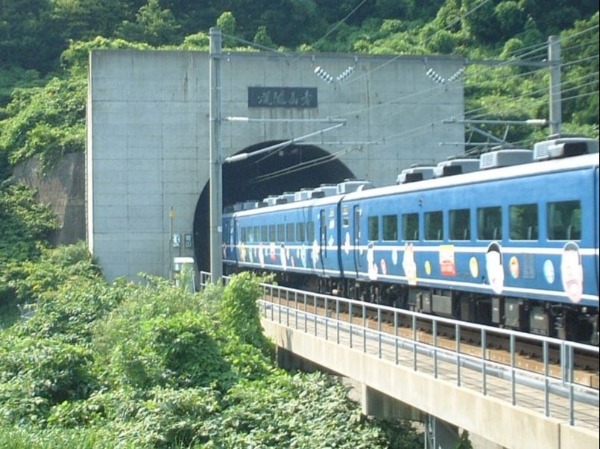
Article posted by
Major tunnels throughout the world are often projects that cut through major landscapes: The Alps, the Rockies or under the English Channel. Although these are great achievements, in today’s urban sprawl, tunnel engineering also has an additional focus. Now engineers need to minimise the impact on existing city infrastructure. Precision, efficiency and risk avoidance for workers and residents are more important than the speed of blasting rock.
Our list takes a look at tunnels that face the forces of nature or a busy city:
Gotthard Base Tunnel, Switzerland
Gotthard Base Tunnel opened in June 2016, after almost two decades of construction work. With a route length of 57.09 km (35.5 miles), it is the world’s longest and deepest railway tunnel. With this new route through the Swiss Alps, journey time from Zurich to Milan was cut by an hour. A particular goal was to add additional rail freight capacity to the Alpine area and reduce environmental damage and road accidents from increasing road freight. The tunnel cost $12.2 billion to build.

Eisenhower Tunnel, Colorado
At 11,158 feet above sea level, the Eisenhower Tunnel is one of the highest vehicle tunnels in the world. It opened in 1973, with the second tunnel completed in 1979; both tunnels are just under 1.7 miles long. They form an important route through the Rocky Mountains, particularly for the skiing and tourism industries. The project had issues working at altitude for both workers and equipment and the engineering cost went significantly over budget. It remains one of Colorado’s most significant engineering projects to date.
Crossrail Project, London
Crossrail is Europe's largest construction and infrastructure project; the tunnels to deliver the new Elizabeth underground railway being its biggest achievement. The railway was due to open in 2018 but the programme is currently delayed and will not open before Autumn 2020 and is running almost £600m over its £14.8 billion budget. This is a project delivering incredible engineering technology such as 8 giant tunnelling machines – ‘underground factories’ on wheels. Despite the cutters being the length of 14 London buses with a rotating cutting head diameter of 7.1m, a laser guidance system ensures millimetre precision as the machines make their way around London’s existing sewer and water systems
Seikan Tunnel, Japan
Before Gotthard Base Tunnel was built, the Seikan tunnel held the title of the longest railway tunnel in the world. It was completed in 1998 and took 17 years to build. The tunnel descends almost 800 feet below sea level, measuring 33.5 miles long. It links the main islands of Honshu with the northern island of Hokkaido. It was instigated when ferry traffic between the two islands began to increase to dangerous levels. Engineers were unable to use regular tunnel-boring machines in some areas due to the variable nature of the rock so explosives and mechanical removal processes were used.

Channel Tunnel, UK/France
The Channel Tunnel is the longest undersea tunnel in the world. The six-year project opened in 1994, but ideas for a cross-channel link had been put forward for many years beforehand. Passengers and freight travel between Folkestone, Kent to Coquilles, Pas-de-Calais in just 35 minutes. At the time of its proposal, it was one of the most expensive ever construction projects. It now accommodates passenger trains, road vehicle transport and international freight with 400 trains passing through the tunnel every day.
Laerdal Tunnel, Norway
The Laerdal tunnel is the world’s longest road tunnel, linking Norwegian cities Oslo and Bergen; travellers can avoid ferry crossings and dangerous mountain passes. The design of the tunnel considers passenger experience with four sections, separated by three “caves” with bright lights. The travel experience is also enhanced by the tunnel having its own air treatment plant – the first tunnel in the world to do so.
In both current and future tunnel engineering projects, these complex infrastructure projects need to deliver in challenging environments, especially in dense urban areas. Experts continue to work on innovation in areas such as geophysical surveying, large-scale tunnel boring machines and safer mining and working practices.
We’re here if you need help defining a role or brief, specialist insight to help shape your ideas or expert help with your recruitment process. Just get in touch to arrange a conversation with one of the team or if you’re ready for us to find the perfect person for you, send us your brief.
If you’re looking for your ideal job send your CV to us to get started or search for the latest job vacancies and we’ll get the ball rolling.